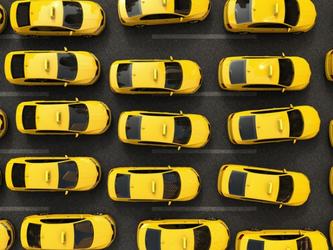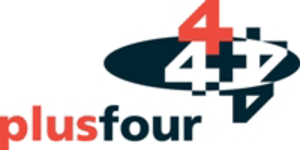To stand out, make life difficult for your customers

When Argos stopped printing its physical catalogue in 2020, it not only marked the death of a beloved British icon – it also highlighted a powerful narrative within marketing: Argos reasoned that online shopping “offered greater convenience.”
It’s easy to see why convenience reigns supreme. Trillion dollar tech giants have created immensely popular and ultra slick innovations like one click payment and face ID. Behavioural science has also strengthened the idea that people act on something when it’s easy to do.
But like all marketing narratives, it leaves little room for nuance: in reality, convenience can be counterproductive. By trying to eliminate inefficiencies, brands end up eliminating the experience itself – the very thing that makes them differentiated and memorable.
In fact, brands can succeed by reversing the common narrative. Rather than always making things easy for consumers, there is value in making them difficult.
Easy doesn’t always mean good
The main challenge with convenience is that it oversimplifies the user experience: removing the elements that make it workable and enjoyable. The Starbucks mobile ordering feature has become so popular that baristas are unable to cope with the demand, wait times are longer, and the company reported that a ‘mid-teens percent’ of mobile orders go uncompleted. In short, it has worsened the problem it was set up to solve.
Or consider Booths, the English supermarket which recently got rid of its self checkout machines altogether because customers deemed them to be unreliable and impersonal. It turns out that the ‘hassle’ of human cashiers is actually their main benefit. As managing director Nigel Murray put it, “we pride ourselves on great customer service and you can’t do that through a robot.”
This is what ad man Rory Sutherland calls the ‘doorman fallacy’: hotels get rid of doormen without realising that their function extends far beyond the door itself: taxi-hailing, security, customer recognition, signalling the status of the hotel. As he says, “the doorman may actually increase what you can charge for a night’s stay in your hotel.”
These problems are clear to see, but the quest for total convenience has one subtle side effect: it kills discovery. Netflix allows us to access films more easily than ever before. But it also makes it easy to not find anything new, as it serves suggestions based on our existing preferences and behaviour. It’s especially tricky given the Netflix catalogue is heavily skewed towards the modern era: there are precisely zero films from pre 1960, arguably the period responsible for the greatest films of all time.
Introducing difficulty into the user experience
This shouldn’t be hassle for the sake of it – brands should still aim to play a helpful role in customers’ lives – but there are three ways in which marketers can add friction in a positive way.
1 ) Surprise
At Ikea, you have to walk through the entire maze-like store to get to the checkout, and if you buy something, you have to assemble it all yourself. Meanwhile, Costco frequently rotates its stock and changes the store layout, making it hard to know what is available and where to find it.
Both retailers intentionally add difficulty, but it’s this difficulty that creates differentiation. Shoppers stumble on items they don’t expect, giving the store a sense of fun and adventure. Nowadays, how many other stores are people genuinely excited to visit?
To be clear, this means slowing down part of the experience – in a way that accentuates the brand – rather than every aspect of the experience. In fact Ikea has, very smartly, started to open more branches in city centres to make them more accessible.
2 ) Simplification
When done correctly, adding friction in one area of the user experience can actually remove friction in another: it allows brands to stay focused on a single value proposition and become known for it.
First Direct effectively told people: you can’t visit us in store, because we don’t have branches, but instead we’ll give you brilliant customer service over the phone. The company’s two million customers now get to enjoy an average 39 second telephone wait time versus eight minutes for the wider industry.
Returning to retail, Aldi makes it hard (actually, impossible) to buy branded goods and to have them delivered to your home. But this obstacle allows the brand to keep ruthlessly competitive prices, and frees up staff to assist customers in stores.
3 ) Scarcity
Convenience is often talked about in the context of banking, and yet the UK’s largest digital bank owes its success to hassle.
Monzo initially required customers to join a three week waiting list, creating the sense that the product was special. It then gave customers a golden ticket – but only one – to pass to friends so they could skip the waiting list and get immediate access. According to founder Tom Blomfield, “it just worked incredibly well – about 40% of our sign-ups in 2017 came from golden tickets and it cost us nothing.”
It’s a principle you see in all walks of life. From our love of diamonds to the demand for Glastonbury tickets, the difficulty in obtaining them is what makes them desirable.
Zig when others zag
Rory Sutherland has a handy rule for innovation: “The opposite of a good idea is also a good idea.” Just as convenience can be helpful for brands, so too can hassle.
So, next time you hear a discussion about making the experience seamless, effortless or efficient, consider flipping it and making it difficult; via surprise, simplification and scarcity.
Sam Salama is associate director at Basis Research

We hope you enjoyed this article.
Research Live is published by MRS.
The Market Research Society (MRS) exists to promote and protect the research sector, showcasing how research delivers impact for businesses and government.
Members of MRS enjoy many benefits including tailoured policy guidance, discounts on training and conferences, and access to member-only content.
For example, there's an archive of winning case studies from over a decade of MRS Awards.
Find out more about the benefits of joining MRS here.














0 Comments